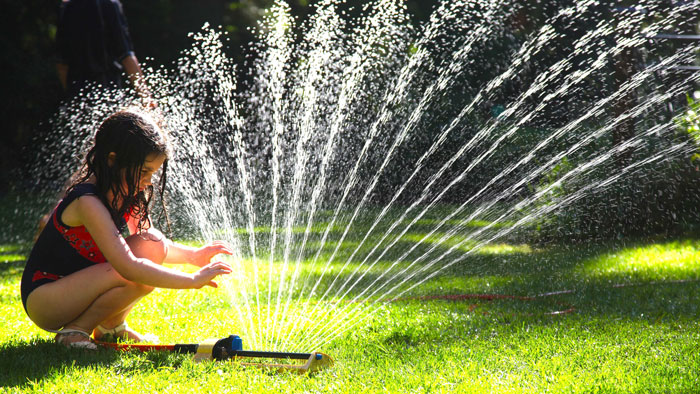While ever the rains pour down and storms abound, we never think of saving water. But once the clouds disappear for a few weeks or months and water in the dams or tanks we use starts to get rather more scarce we expect water restrictions. However, saving water all the time makes sense because it not only costs less, but helps to save our water supply. Installing reticulation may seem as if it will enable you to use more water rather than save it, but if it is the right kind it will actually save water.
Choose the Right Irrigation System
Much depends on how large your garden and lawn area is and what you grow. For the most part, annuals and vegetables take more water than perennials and permanent shrubs. However, even the thirstiest plant can grow well when you use a drip system that delivers water right to the roots where it can be used more efficiently. When water is sprayed over a wide area some of it will evaporate, some will run off and some will land in the wrong spot, such as on the pathway. A drip system avoids all this waste.
Drip Irrigation Design Guidelines
Use Technology
There are irrigations systems available that use sensors to detect when it has rained or whether it is likely to rain. These are automatically switched off so that the garden is not watered when it is not needed. And being automatic, they save you time and work. Set the timer to turn on in the cool of the evening so that there will be no evaporation and your plants will have all night to suck it up before the sun steams it away.
Install a Rainwater Tank
You can harvest rainwater run-off from the roof to use in the garden even though it very likely won’t last as long as you might expect – depending on the size of the tank, of course. Most suburban tanks are fairly small, but if you live in the sticks you will be using a larger tank. Still, having that extra water is great because it is free and has nothing in it except pollution from the air and your roof. You can use it for vegetables or the flowers.
Make Use of Grey Water
Once of the best ways to save water is to re-use your grey water. This is water from the shower, bath and laundry. It can be pumped straight onto the lawn, or saved in an underground tank until you need it. Water from the septic system is not included, but even still, it may not be good for vegetables due to the soap and detergent in it. However, reticulated water can be diverted to water the lawn and will ensure a nice green cover of grass even in the driest conditions.
If everyone used the above hints to save water there would be far fewer water restrictions in dry times. Better still, the savings would mount up over time until you could see a good saving on the cost of water over a year. In addition, your garden and lawn would reap the rewards of having enough water to look lush and green all year round instead of only in times of good rainfall.
